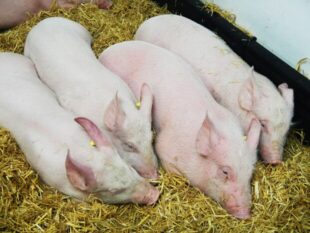https://defrafarming.blog.gov.uk/provide-supplementary-winter-food-for-birds/
Provide supplementary winter food for birds
The guidance on this page is for SFI pilot participants only. Please visit GOV.UK for the official Sustainable Farming Incentive scheme guidance.
Find out how land managers can help increase farmland bird populations by spreading seed during winter and early spring when natural food is harder to find.
If you’re completing this action as part of the Sustainable Farming Incentive pilot, how you do it is up to you.
The advice on this page can help you get better environmental and business benefits, but you do not have to follow it to get paid.
Why farmland birds need extra food in winter
Spreading seed is a simple and effective way to increase the availability of food for farmland birds.
To maintain or increase bird populations, you also need to provide birds with year-round food sources.
When to start spreading seed
Start spreading seed when other seed sources on your farm start to become depleted. When this happens depends on:
- the amount of natural and sown seed available in the autumn
- the number of birds
- how harsh the weather is
As a guide, spread seed from December through to April.
Choosing appropriate feeding sites
You should spread seed at more than one site to increase availability and provide seed for species that prefer to feed in different locations. For example:
- tree sparrows and yellowhammers like to have nearby cover, such as a hedge
- corn buntings prefer sites next to fences or ditches and with vantage points to perch and scan for predators
Top up the seed at each site on different days to make sure there is always some seed available.
Spread seed on firm, free-draining areas of bare ground or short vegetation to make it easy for birds to find. If you cannot easily see the seeds then the vegetation is too long.
Suitable areas include:
- bare or thinly vegetated farm tracks in quiet areas
- hard-standing areas away from farmyards, such as a beet pad
- winter bird food plots
- overwinter stubble
- cultivated fallow areas
- regularly mown grass margins with short vegetation
The recommended seed mix
This would be a good general seed mix appropriate for a range of farmland birds.
| Seed | Rate |
|---|---|
| Wheat | 50% |
| Naked oats | 20% |
| Oilseed rape | 10% |
| White millet | 10% |
| Red millet | 5% |
| Canary seed or sunflower hearts | 5% |
You must use organic seed if you farm organically or are converting to organic farming. If you want to use non-organic seed, you’ll need approval from your organic certification body.
Adapting the seed mix
Different species prefer feeding on different seeds, depending on things like beak size and the seed’s nutritional value. You can adapt the seed mix to provide food for certain species if you know they are in your area.
When adapting the recommended seed mix, make sure that:
- you include at least 2 cereals and 3 small-seeded crops
- small-seeded crops make up at least 30% of the mix by weight
- you avoid maize or tic beans as they attract pests and birds prefer other seeds
Do not use tailings (small seeds removed from the harvested crop) as their nutritional value varies greatly.
Larger buntings like yellowhammers prefer cereals, so you could add barley or triticale (a hybrid cross between wheat and rye) to the recommended seed mix.
Finches prefer smaller, oily seeds. You could increase the proportions of these by adding some linseed or mustard seed.
Some species have seen a greater decline in populations than others so it’s especially worthwhile changing your seed mix to suit these. For example:
- corn bunting feed mainly on wheat with smaller amounts of naked oats and barley
- for tree sparrows, increase the amount of red millet and sunflower hearts
- for grey partridge, increase the proportion of cereals in your seed mix
How much to spread
Try to always have food available at your feeding sites.
To start with, spread around 25kg of seed once a week at each feeding site. Check regularly and adjust how often you feed or the amount you use, to match what the birds need.
Birds need more seed during periods of cold weather, particularly if other food sources are unavailable due to frost or snow.
There should not be large amounts of seed left uneaten. If you see this, stop feeding for at least a week and lower the amount of seed you spread.
How to spread the seed effectively
Aim for an even spread of seed either by hand or using equipment, such as a clean slug pellet spreader or purpose-built spreader.
To discourage pests like rats and reduce the risk of disease transmission between birds at your feeding sites:
- spin or scatter seed only
- do not use hoppers and avoid creating piles or long trails of seed
- move feeding sites every year, to reduce pathogen build-up
You can move feeding sites during the same winter, but no more than 50 metres each time.




 The
The 